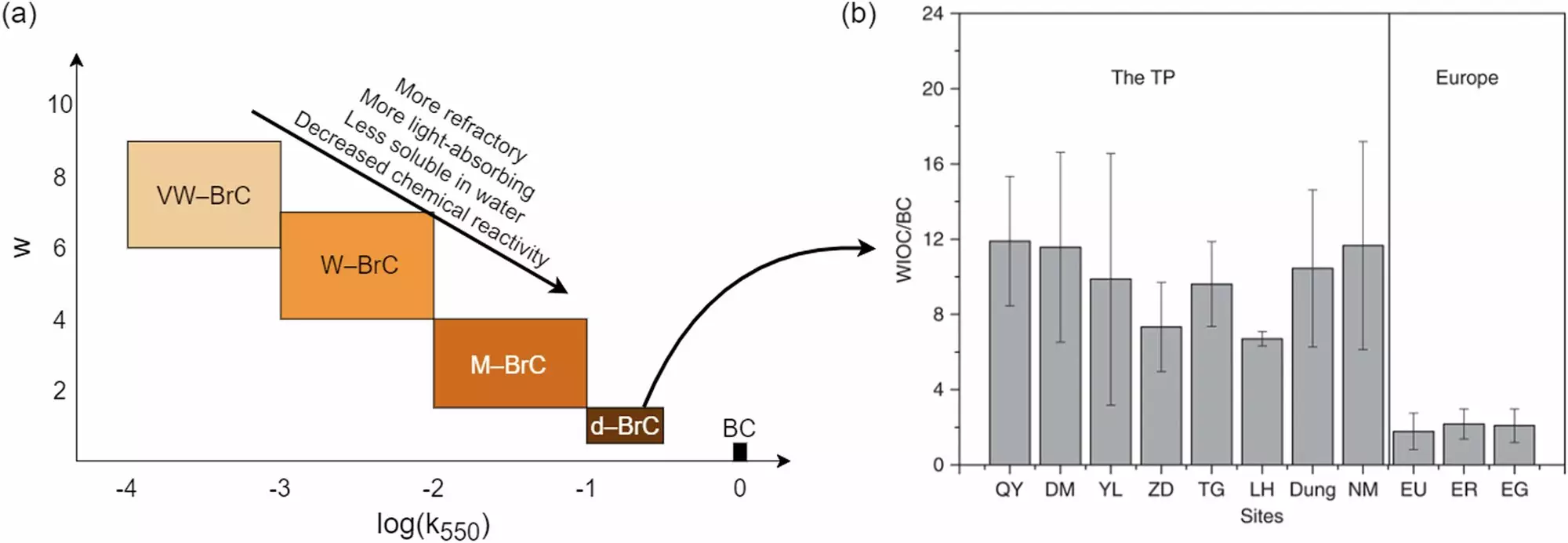Wildfires not only devastate forests and homes, but they also leave behind potent climate heaters in their wake. These particles enhance the absorption of sunlight and warm the atmosphere, leading to significant effects on the environment. As dark-brown carbon (d-BrC) from wildfires is deposited on snow, it acts as a snow-warming agent, darkening the surface and reducing reflectance.
Recent studies have shown that d-BrC plays a much larger role in snow melting than previously recorded. It is 1.6 times more potent than the main culprit, black carbon. The deposition of water insoluble organic carbon on snow in regions like the Tibetan Plateau has been noted before, but the specific snow melting potential of these particles has not been thoroughly investigated.
Researchers at Washington University in St. Louis have been delving into the effects of d-BrC on snow melt. Described as an “evil cousin” of black carbon, d-BrC cannot be easily removed or bleached from snow surfaces. Without considering the impact of d-BrC, researchers might have been underestimating the snow melt caused by wildfire smoke deposition. This new research will lead to more accurate climate models and measurements.
Challenges and Future Research
As wildfires become more widespread, policymakers will need to address the mitigation of d-BrC to prevent anomalous snow melt. Despite absorbing slightly less light than black carbon, d-BrC is four times more abundant in wildfire plumes, making it a significant contributor to snow warming. The research team plans to further investigate the real-world effects of d-BrC through experimental studies.
To study the effects of d-BrC on snow melt, the research team is conducting snow-aerosol experiments in a lab setting. By creating a four-foot-tall snow globe and depositing aerosols on the snow, they can simulate the impact of d-BrC deposition. This innovative approach allows researchers to understand the mechanisms of snow melt without the need to go to the field.
The study of dark-brown carbon from wildfires sheds light on the significant role it plays in snow melt and climate warming. By unraveling the mysteries of d-BrC and its effects on snow reflectivity, researchers are paving the way for more accurate climate predictions and mitigation strategies to combat the consequences of wildfires on the environment.


Leave a Reply